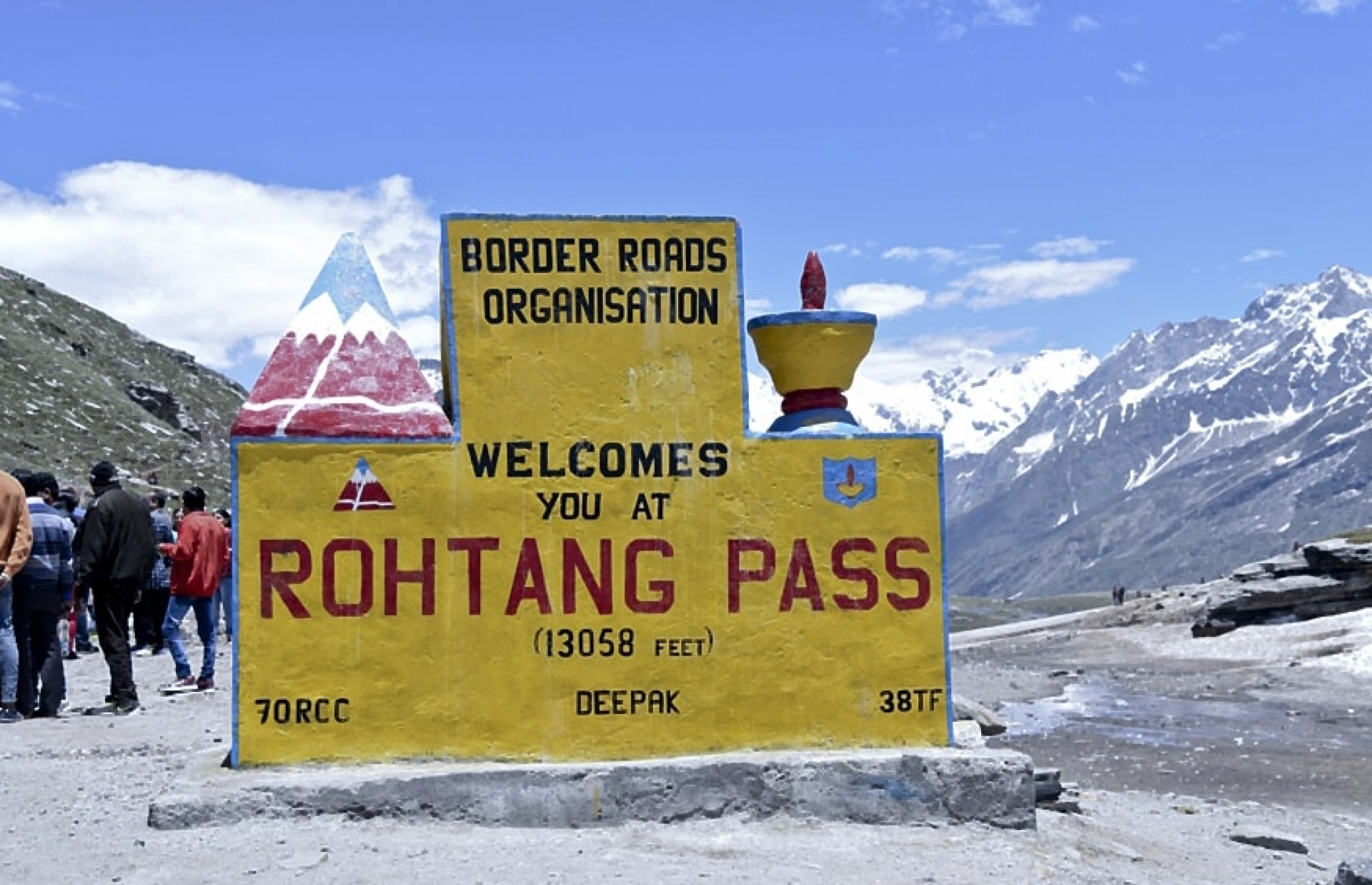Om Parvat is a majestic mountain in the Himalayan range, located in the Pithoragarh district of Uttarakhand, India. It is also known as Adi Kailash, Chhota Kailash, or Little Kailash, as it resembles the holy Mount Kailash in Tibet, the abode of Lord Shiva. Om Parvat is famous for its natural phenomenon of snow deposition that forms the shape of the sacred syllable Om (ॐ) on its south face. Om is considered to be the primordial sound of creation and the essence of the Hindu faith. It is also revered by Buddhists and Jains as a symbol of enlightenment and peace.
The Meaning of Om Parvat
Om Parvat derives its name from the Sanskrit word Om, which is composed of three sounds: A, U, and M. These sounds represent the three states of consciousness: waking, dreaming, and deep sleep. They also correspond to the three realms of existence: earth, atmosphere, and heaven. The fourth state, beyond these three, is silence or pure consciousness, which is symbolized by the dot above the crescent in the Om symbol. Om Parvat is thus a representation of the ultimate reality that transcends the phenomenal world.
The Importance of Om Parvat in Hinduism
Om Parvat is considered to be a sacred place for Hindus, as it is believed to be associated with Lord Shiva, the supreme deity of Hinduism. Shiva is the destroyer and transformer of evil and ignorance, and the source of all knowledge and wisdom. He is also the patron of yoga and meditation, which are practices that aim to achieve union with the divine. Om Parvat is said to be a manifestation of Shiva’s power and grace, and a place where one can experience his presence and blessings.
Om Parvat is also a part of the Kailash Manasarovar Yatra, a pilgrimage that involves visiting Mount Kailash and Lake Manasarovar in Tibet. These are considered to be the most sacred sites in Hinduism, as they are associated with various legends and myths involving Shiva and other gods and goddesses. The pilgrimage is said to be a journey of purification and liberation from the cycle of birth and death. Om Parvat can be viewed on the route to the Kailash Manasarovar Yatra from Nabhidhang camp in Nepal, which is near the Lipulekh Pass that connects India and Tibet.
The Geography of Om Parvat
Om Parvat has an elevation of 6,191 meters (20,312 feet) above sea level. It lies on the Indo-Nepal border, with 74% of its area in Nepal and 26% in India. It is part of the eastern Kumaon Himalaya range, which extends from Nepal to Uttarakhand. It is surrounded by other peaks such as Brahma Parvat, Annapurna Parvat, Nanda Devi, and Trishul. It is also near Parvati Lake and Jonglingkong Lake, which are considered to be sacred by Hindus as well.
Om Parvat has a challenging terrain and climate, making it difficult to climb. It was first attempted by an Indo-British expedition team in 1952, but they failed to reach the summit due to loose snow. They also vowed not to climb the last ten meters out of respect for its holiness. In 2004, another team successfully ascended Om Parvat but did not touch the final few meters for the same reason.
Om Parvat is a unique and fascinating mountain that attracts many trekkers, pilgrims, and seekers of spirituality. It is a place where nature and divinity meet in harmony and beauty. It is a place where one can witness the glory of Om, the sacred sound that pervades the universe.
Conclusion:
OM Parvat stands as a timeless symbol of spirituality and an embodiment of the deep-rooted connection between nature and divinity in Hinduism. Its magnificent beauty, along with the natural formation of the "OM" symbol, attracts both devout pilgrims and adventure seekers from around the world.
The sacred mountain serves as a reminder of the power and vastness of nature, encouraging us to connect with our inner selves and embrace the divinity that resides within each of us. For those who seek solace, self-discovery, and an opportunity to experience something truly extraordinary, OM Parvat offers an unforgettable journey of the soul amid the splendor of the Himalayas.

